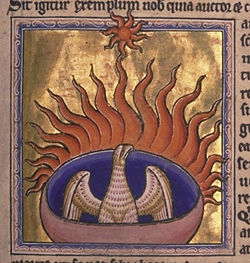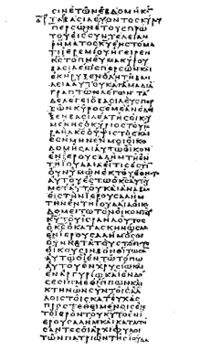Early Christians often cited the myth of the phoenix as a powerful representation of the death and resurrection of Jesus Christ. This magnificent bird self-destructs in a ball of flame, but from the ashes it rises again, immortal. Here is a picture of one from Aberdeen Bestiary, an illuminated manuscript from the 12 century.

It’s a very old legend of Greek origin. How did it every get applied to Christ? It kind of works, but maybe there is more to it then that:
In some early Christian circles the analogy was thought to be sanctioned by the LXX of Ps. 92:12, where, in the phrase ‘the righteous shall flourish like a palm-tree’, the word for ‘palm-tree’ is ‘phoinix’, the same as the Greek for the legendary bird.
-N.T. Wright, The Resurrection of the Son of God, footnotes on p. 482
So when the writers of the Greek Septuagint (the LXX), were doing their translations of the Hebrew old testament in 2nd century BC, “palm-tree” got translated as “phoenix”. See, the Phoenix myth is actually about Jesus! It’s right there in the Bible! Well, sort of. There are some obvious parallels even without the scripture reference, but it’s hard to imagine people taking the analogy as seriously throughout the years if it were not there.

